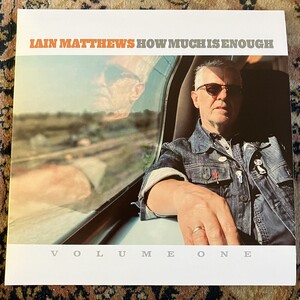- Workshops in Wild Verband
- Recensie quotes A Pawnshop Love Affair feb 2025
- Recensie OOR februari 2025
- Recensie quotes A Pawnshop Love Affair, jan 2025
- Hidden Xmas Deluxe
- How Much Is Enough
- Workshops in Wild Verband
- Gelderlander interview 11 maart 2024
- Ghostwriter in persquotes
- VIDEO IN YOU ONLY
- GHOSTWRITER TOER '24-'25
- Recensie quotes Ghostwriter
- Ghostwriter uit!
- Beste vooruitzichten!
- Happy Even Only
- Legs Anymore
- Nieuw album
- Biografie BJ 2023
- Yellow Moon
- The Matthews Baartmans Conspiracy in Japan
- BJ met Kauffmann Cozy
- Satellite Shuffle uit in Japan
- Hommage aan Jeff Beck
- 330 Shades
- Vintage Guitar Review
- Satellite Shuffle in Heaven
- Cabin Fever
- LINTJESREGEN
- Satellite Shuffle
- The Saturn 3
- Studio Wild Verband in beeld
- Satellite Shuffle
- Nieuw album The Space Age Travellers
- New tourdates
- HiLo
- Gebruiker
- FA 700 first flight in F
- Recensie The Matthews Baartmans Conspiracy
- Veranderde concert data
- Cobra!
- Glazig
- Bronzen Vogel
- Optredens 2022
- Mini album Op Gepaste Afstand
- Distant Chatter
- Op Gepaste Afstand
- Another Xmas tale
- Bij VERZAMELAAR
- Kruispunt Jaomerdal
- Xmas Tale: Saviour's Sake
- (zelf)reflectie
- Boeldag Blues
- Songfestival
- Maaiveld
- Kerstlied
How Much Is Enough
Vrijdag 25 oktober 2024Today Iain Matthew' latest album, produced in Studio Wild Verband, was released on both sides of the Pacific. Here's one of the first reviews we received. A great one!
'How Much Is Enough?' Álbum review by Doug Collett, Glide Magazine (USA)
Iain Matthews is hardly a household name, but he has had his share of flirtations with the mainstream throughout his sixty-year-plus career. Having exited English folk pioneers Fairport Convention, he formed Matthews Southern Comfort, with whom he had a hit in 1970 with Joni Mitchell’s “Woodstock.” A decade later, following a move to Los Angeles and the formation of the short-lived group Plainsong, a solo career commenced during which he garnered a sizable swath of popularity with the more polished likes of “Shake It”
In recent years, Matthews created some baroque jazz works and reconvened a new configuration of Southern Comfort, reminding us that his fusion of folk, country, and rock predated the contemporary label of Americana. Iain Matthews’ eloquence distinguishes songs such as “I Walk” (co-written with Plainsong co-founder Andy Roberts). At the same time, the spare accompaniment is a testament to his taste in “Ripples In A Stream.”
In a tempered and deliberate pace, the latter begins the baker’s dozen cuts, totaling just slightly less than an hour. Featuring organ lines from Mike Roelofs that reflect the motion of the song’s title, a quiet but cheery banjo by co-producer B.J. Baartmans (in whose studio this was all recorded), and a most purposeful rhythm set by drummer Sjoerd Van Bommel, the cut fleetingly evokes the early work of The Band.
Making such a connection–as does the mandolin-decorated narrative of “The Santa Fe Line”–it’s well to recall Iain Matthews’ early solo work appeared around the same time as that iconic group’s debut. Likewise, the delicate acoustic guitar and piano mix of “The Bird And The Fish” compares favorably with classics of the era such as Ladies of the Canyon.
Political references Matthews intones during “Where Is The Love” appear in an understated setting. Genteel electric guitar chording complements background harmonies as dignified as Iain’s lead vocal. At the same time, the turn of lyrics from the topical to the personal is the mark of the best such relevant material.
Likewise, the character portrait “She’s A Digital Girl” hardly sounds strained. On the contrary, Matthews’ phrasing is all wry bemusement, a healthily detached air supported by electric piano and cymbal washes. Carefully arranged as in How Much Is Enough?, the Baartmans above captures the detail in his recording, mixing, and mastering.
As a result, Iain Matthews’ distinction as an undeservingly unsung figure in modern folk-rock lies only partially in the purity of his voice. During “The New Dark Ages,” he deftly delivers a blend of fragility and resilience, then turns pointed in tone on the most upbeat selection here, a brisk “Turn And Run.” And the litany of namechecks in “Rhythm And Blues” only solidifies the man’s discerning grasp of history.
The unaffected simplicity at work in the self-sufficient production and musicianship on a track like “Good Intentions” furthers the clarity of reflection within his title song. Its designation as such also reaffirms the undercurrent of pride that runs through this satisfying work. Such an attitude is all the more appropriate because this level of quality is consistent with most of the fifty-plus titles in Iain Matthews’ discography.
Like the reflection of multiple images inside and outside the digipak cover, How Much Is Enough? features a variety of ingenious perspectives that compels its placement on ‘Best of 2024’ lists
